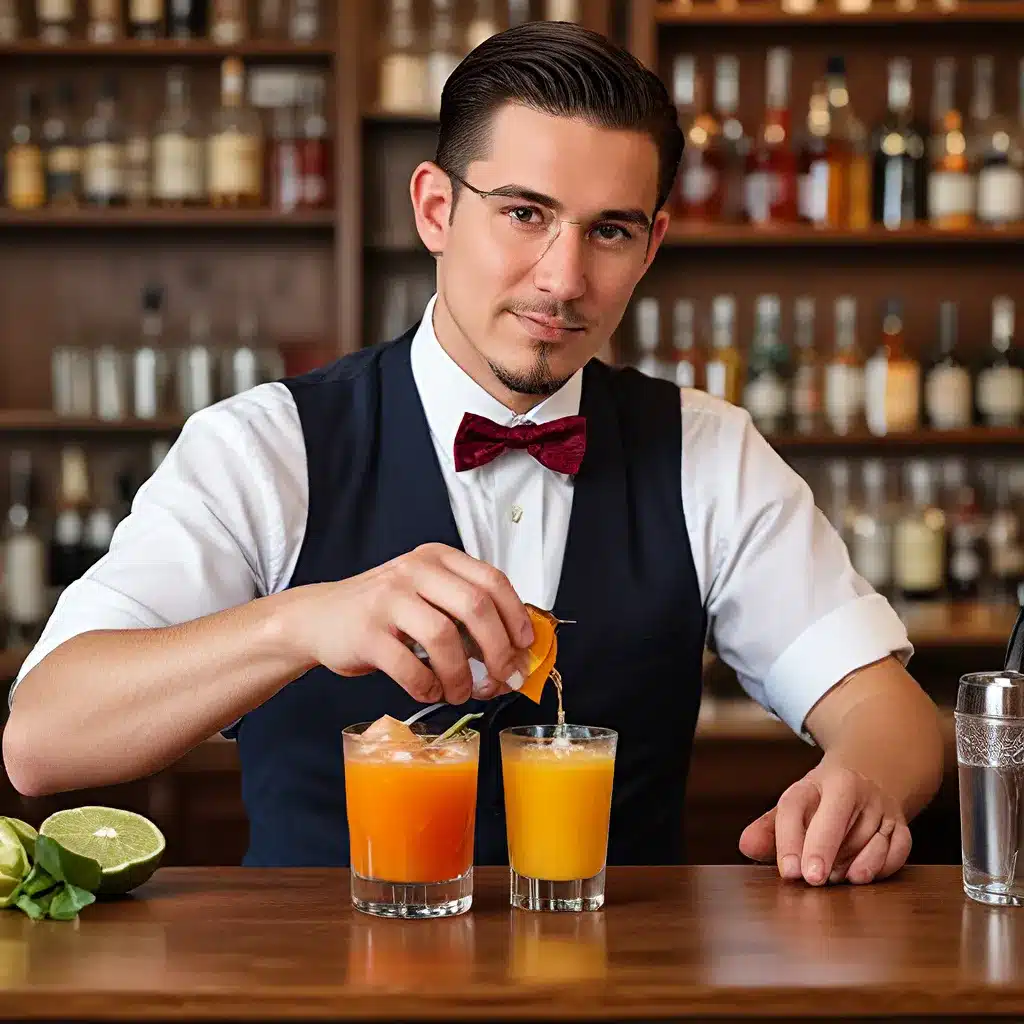
Uncovering the Mystique of the Modern Mixologist
Let me let you in on a little secret: I’m a bit of a cocktail enthusiast myself. There’s just something captivating about the art of mixology – the way a skilled bartender can transform humble ingredients into a symphony of flavors that dazzles the senses. And trust me, I’ve had my fair share of memorable drinks over the years.
One that particularly stands out for me was at a now-defunct bar called Duello in Los Angeles. The drink was called “The New Order” – a pandan-infused milk punch that arrived at the table shrouded in a cloud of palo santo smoke. Created by a bartender named Kaiko Tulloch, it took up to three days to steep and clarify, and the result was a velvety smooth elixir that drank like sinking into memory foam. As the Punch article describes it, “The New Order drank like sinking into memory foam.” Truly a masterpiece of the craft.
But therein lies the rub with the term “mixology” – the very label that we use to describe this art form is laced with contradictions. On one hand, it evokes a sense of grandeur and prestige, conjuring images of white-jacketed bartenders meticulously crafting each cocktail with the precision of a surgeon. Yet on the other, it carries a whiff of pretentiousness that can alienate the average drinker.
The Evolving Identity of the Mixologist
The origins of the term “mixologist” can be traced back to the 1850s, when it was used in a tongue-in-cheek manner to describe a “fancy” bartender. As writer David Wondrich explains, the word was “Fancy American for somebody who mixes tipples or a bartender.” It wasn’t until the late 19th century that the term gained more widespread usage, becoming a much-needed synonym for an occupation that lacked a clear label.
But Prohibition changed everything. For decades, the term “mixologist” lay largely dormant, resurfacing only occasionally in advertisements for home bar setups. It wasn’t until the cocktail renaissance of the early 2000s that the label experienced a resurgence, with bartenders like Dale DeGroff embracing the title as a means of elevating their craft.
As DeGroff told Eater in 2011, “I called myself a master mixologist because I wanted notoriety from the press. And I got it.”
The Rise and (Partial) Fall of Molecular Mixology
The cocktail renaissance also gave rise to a new wave of mixological experimentation – the era of “molecular mixology.” Inspired by the culinary world’s embrace of avant-garde techniques, bartenders began pushing the boundaries of what was possible behind the bar. Foams, gels, and suspensions became the order of the day, as drinks were designed more for visual spectacle than pure flavor.
As one bartender, Iain McPherson, put it, “When I was a younger bartender in Europe making other people’s drinks, they were so out there. Maybe the word ‘interesting’ as opposed to ‘delicious.'”
But the pendulum soon swung the other way, as a backlash against this ostentatious style of mixology took hold. Bartenders began to strip away the affected flourishes, refocusing their attention on the fundamentals of the craft – the historic techniques and classic recipes that had formed the bedrock of bartending for generations.
Finding the Sweet Spot
However, as Iain McPherson notes, the pendulum is now swinging back, with experimentation once again becoming embraced – though in a more approachable, palatable way.
“I think it’s come back, and it’s coming back in a better, more approachable way,” he says. “I was fascinated by molecular mixology. I tried a lot of the techniques I could with the tools I had at the time during the big craze of it.”
Indeed, as writer David Wondrich points out, the art of mixology has always been a delicate balancing act between the new and the old. “Finding novelty and innovation in the not-so-novel seems par for the course,” he writes. “By 1920 just about every technique and major ingredient known to modern mixology was in play. In barcraft, past and future are often indistinguishable.”
Embracing the Mixologist’s Duality
So where does that leave us in the ongoing debate over the “mixologist” label? Well, as it turns out, the very duality that makes the term so contentious is also what gives it enduring power.
As Wondrich succinctly states, “Bartender or Mixologist is an eternal question of debate because it has to be.” The fancy and the down-to-earth, the reverent and the irreverent – these conflicting impulses are woven into the very fabric of the mixologist’s identity.
“I think it’s a healthy debate,” Wondrich says. “For the fancy people, it’s good to be reminded that you might want to bring it down to earth a little bit. And then for the other people, it’s good to be reminded not to be so lazy and incurious and maybe learn how to mix a drink. Eventually the good ones realize they can be both.”
And that, my friends, is the essence of the modern mixologist – an alchemist who can dazzle us with their technical mastery one moment, and then ground us with a perfectly balanced classic cocktail the next. They are the guardians of bartending’s rich history, while also pushing the boundaries of what’s possible behind the bar.
So the next time you find yourself sipping on a meticulously crafted cocktail at your favorite local pub or restaurant, take a moment to appreciate the mixologist’s dual-natured artistry. Behind the flair and the flourish lies a deep reverence for the craft – and a relentless pursuit of perfection that elevates the humble cocktail to new heights.

